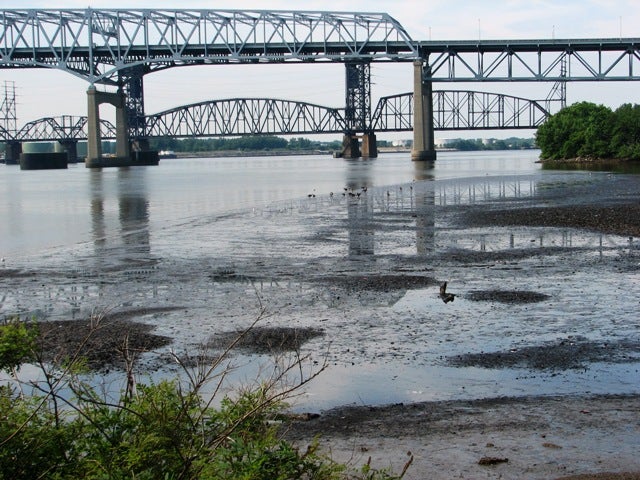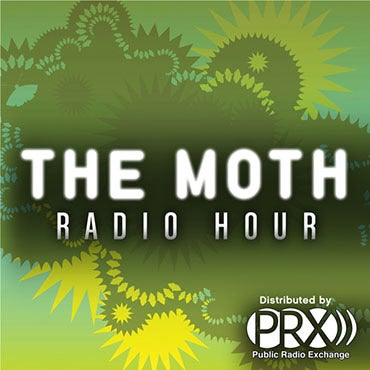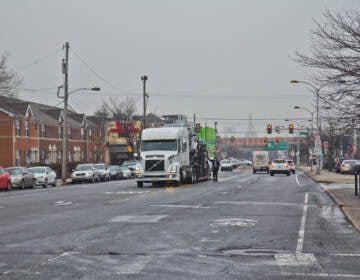A unique Delaware River Greenway walk

June 16
By Kellie Patrick
For PlanPhilly
Lee Carr spent the summers of her Bridesburg childhood fishing on the Delaware River with her father.
While she loathed the resulting catfish and eel suppers, Carr, 55, has missed the Delaware, which for decades has largely been cut off from Bridesburg by industrial development.
Today, she went back.
Carr was one of about 50 people who walked the Bridesburg section of the future North Delaware River Greenway, a trail that will stretch eight miles from Pulaski Park to Glen Foerd.
“This is just beautiful back here!” she said, taking in a river-side meadow full of wildflowers near the former coke plant, where the coal by-product was produced for industry and residential use.
The primary goal of the Delaware River City Corporation – the non-profit agency working to create the trail – is to reconnect Philadelphians with the river. It’s a goal shared by those working to renew the waterfront up and down the Delaware, including the community activists, residents and others who have participated in the Penn Praxis-led efforts to re-imagine the Central Delaware.
The hope is that the shared vision will lead to a series of connected trails running throughout the entire city. And that Philadelphia’s river pathway would be but a part of a larger trail system – The East Coast Greenway – running from Maine to Florida. Construction is set to begin on the section that runs through Pennypack Park in August.
In much of Philadelphia, it was the construction of the Delaware Expressway that separated the city from the river.
“You have to get on I-95 and look out the window to see what it looks like,” DRRC chairman Robert Borski joked with the walkers before they began.
But Bridesburg is east of the highway. The community was established where it is because business and industry needed river access, said Jane Spector, a landscape architect who recently completed a cultural landscape study on Bridesburg for a class she took at the University of Pennsylvania.
“There used to be a pier, and people would go to dances there,” she said. “There were fishing shacks.”
Ironically, so many businesses located on the river that they eventually cut off public access to the water, Spector said.
Some of that business, including the coke factory, is now defunct. Westrum Development Company plans to build 2,000 new homes – condos and row homes – on the 78-acre site, now classified as a brownfield.
John Dean, Westrum’s vice president of land acquisition, spoke to the walkers as they stood near the development site. His company will develop about 2,000 feet of water frontage as part of the Greenway, he said. The linear park will be up to 150 feet wide in some places, he said, and the trail will be accessible to both wheelchairs and strollers.
There will be 25 to 30 parking spaces for the public near the new homes – prices of which have not yet been set.
Delaware Avenue will be extended in this part of the city, and the Greenway will connect with a proposed trail along side that extension, forming a half-mile loop.
Before the first nail is pounded, the area must be cleaned up.
The contaminants have not sunken deep into the soil, he said. Rather, the problems, including a lot of coal dust, are near the surface. Some will be hauled away. Some will be capped by paving or a dirt layer, he said. Because this must be left undisturbed, few homes will have basements.
Jennifer Shaw, 23, who pushed her 6-month-old son, Gage, along the roughed-out trail site, was pleased to hear how accessible the trail is. With her boyfriend, Stephen Regan, Shaw runs a community website, www.Pridesburg.com. She was very skeptical of the development at first, but has warmed to it, largely because it will help re-open the river to Bridesburg residents.
“I can’t wait” to get on the finished trail, she said.
The trail will also cut through property owned by chemical giant Rohm & Haas, which still makes products in its original plant in Bridesburg.
DRCC Executive Director Sarah M. Thorp said her organization is keenly aware that the trail must complement other uses of the river, including business and industry.
Rohm & Haas does not use much of its land near the river, and it is working with DRCC to create public access through that portion – a feat that will not always be easy, considering the post-9/11 chemical industry security requirements.
“There is a fence around the whole place, and there are security cameras,” Thorp said.
“The fence is specially wired so that if you touch it, the cameras point right at you.”
The Greenway is not just going to help people who love the river, but birds and animals who need it or the nearby mudflats, wetlands and meadows.
That means restoring these habitats, in part by removing invasive plant species and replacing them with native flora that have a niche here, said Patrick Starr, DRCC secretary and vice president of the Pennsylvania Environmental Council.
“We’re on the Eastern Flyway” for migrating birds, he said. “Bridesburg, in the future, can be an important destination for migrating birds.”
Frank Rogaski, 66, said his family has lived in Bridesburg for more than 100 years. He used to go to the river near Lewis Street to fish and watch the boats go by. He’s hoping to stay healthy enough to use the finished trail.
“Frank, we’ll bring you down here in your wheelchair if we have to,” Carr teased.
WHYY is your source for fact-based, in-depth journalism and information. As a nonprofit organization, we rely on financial support from readers like you. Please give today.






